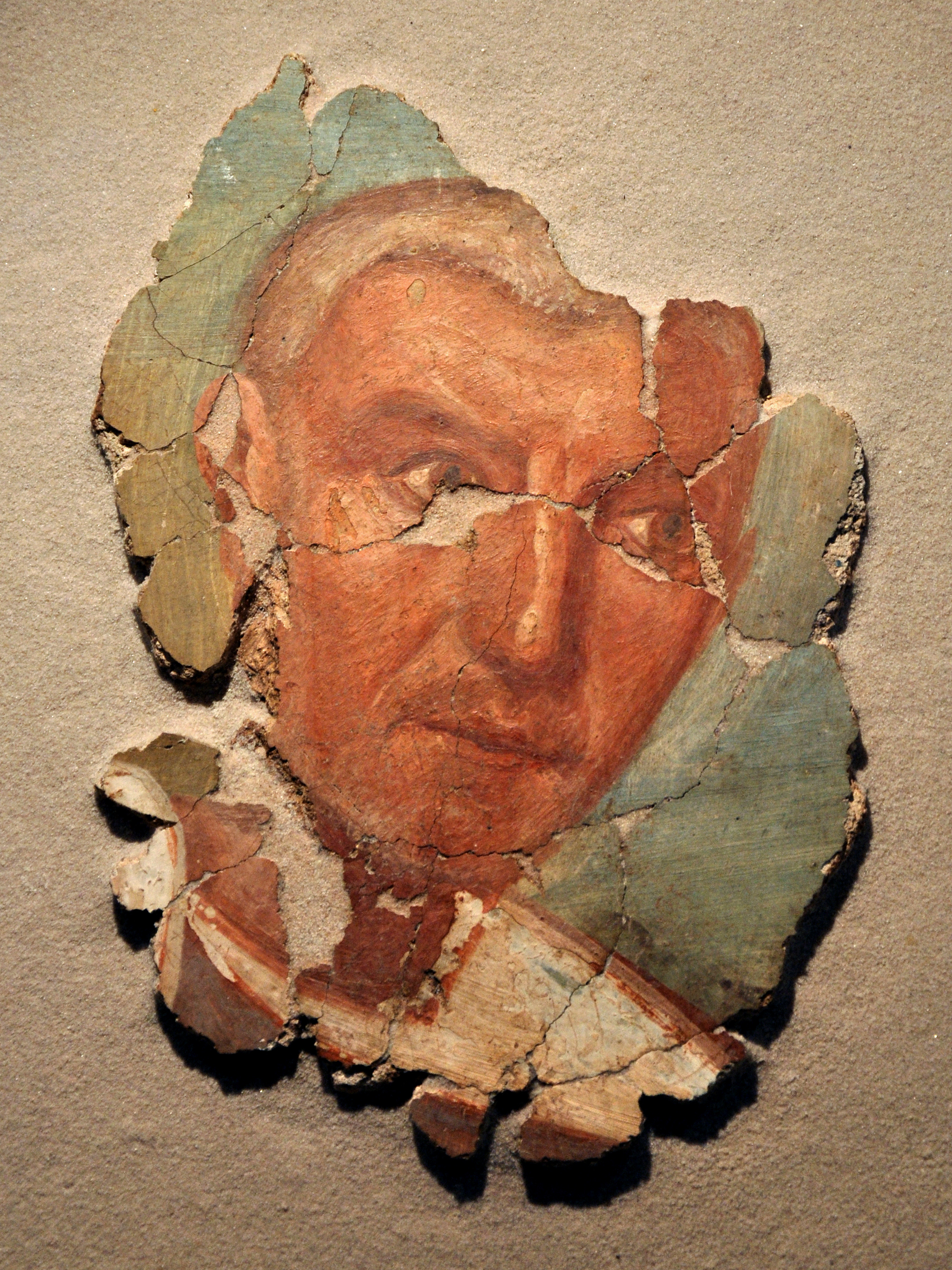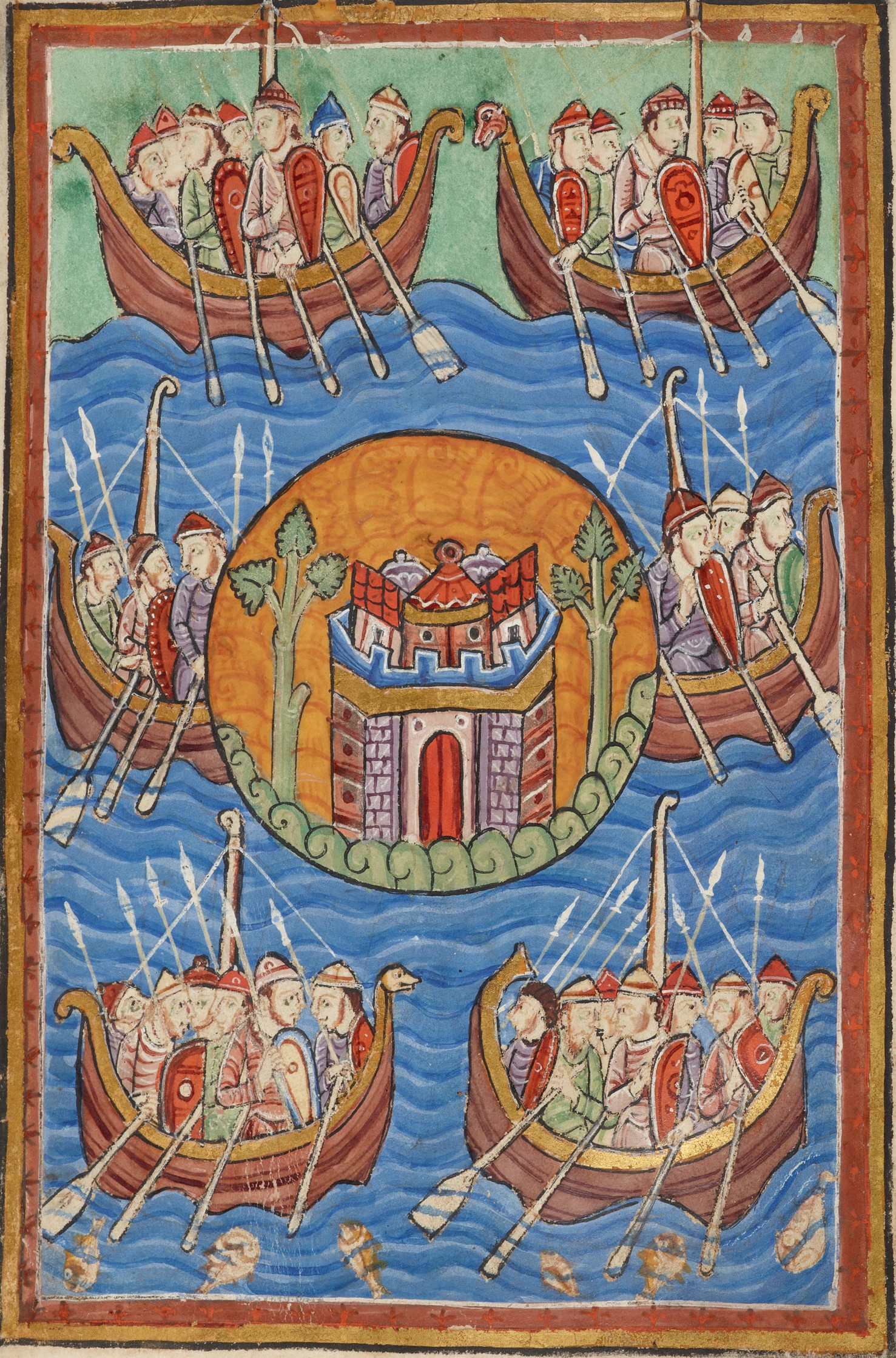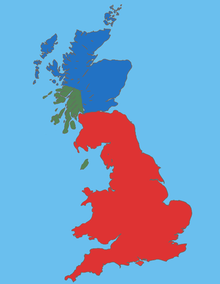|
King Of Brittany
The Kingdom of Brittany () was a short-lived vassal-state of the Frankish Empire that emerged during the Norse invasions. Its history begins in 851 with Erispoe's claim to kingship. In 856, Erispoe was murdered and succeeded by his cousin Salomon. The kingdom fell into a period of turmoil caused by Norse invasions and a succession dispute between Salomon's murderers: Gurvand and Pascweten. Pascweten's brother, Alan, called the Great, was the third and last to be recognized as King of Brittany. After his death, Brittany fell under Norse occupation. When Alan Twistedbeard, Alan the Great's grandson, reconquered Brittany in 939, Brittany became a sovereign duchy until its union with France in 1532. History Background In 383, Magnus Maximus was proclaimed emperor by his soldiers in Britain. He promptly invaded Gaul and deposed Emperor Gratian. During the invasion, he instructed some of his soldiers to occupy the western part of the Armorican peninsula and expel soldiers loy ... [...More Info...] [...Related Items...] OR: [Wikipedia] [Google] [Baidu] |
Battle Of Jengland
The Battle of Jengland (also called Jengland-Beslé, Beslé, or Grand Fougeray) took place on 22 August 851, between the Frankish army of Charles the Bald and the Breton army of Erispoe, Duke of Brittany. The Bretons were victorious, leading to the signing of the Treaty of Angers in September 851 and the recognition of Erispoe as the legitimate ruler of the Bretons under Charles the Bald. Background In 845, Nominoë, Duke of Brittany, had defeated Charles the Bald at the Battle of Ballon. A truce had followed, but in 849 Nominoë resumed his offensive against the Franks. He sought to establish full personal control over his duchy and extend its territory. In 851, Frankish garrisons left in the previous year in Rennes and Nantes capitulated to Nominoë, who raided eastwards, ravaging Le Mans. Nominoë then decided to advance to Chartres, but died suddenly, near Vendôme. His successor, his son Erispoe, took command of the Breton force and continued its offensive in alliance w ... [...More Info...] [...Related Items...] OR: [Wikipedia] [Google] [Baidu] |
Alan II, Duke Of Brittany
Alan II (c. 900–952), nicknamed Wrybeard or Twistedbeard, Alan Varvek in Breton, was Count of Vannes, Poher and Nantes, and Duke of Brittany from 938 to his death. He was the grandson of King Alan the Great by Alan's daughter and her husband Mathuedoï I, Count of Poher. He expelled the Vikings/Norsemen from Brittany after an occupation that lasted from 907 to about 939. 205px, Statue of Alan Twistedbeard, work of Amédée Ménard, in the courtyard of the castle of the Dukes of Brittany in Nantes (1976) The Vikings Refuge in Britain Alan had to take refuge, along with his father Mathuedoi I, with King Æthelstan of England because the Norsemen had invaded Armorica. The '' Chronicle of Nantes'' reports: : Alan became ruler of Brittany at the end of a 33-year interregnum after the death of his maternal grandfather, Duke Alan the Great. Return to Brittany Alan landed at Dol in 936, at the invitation of a monk, Jean de Landévennec, and with the aid of Æthelstan. By ... [...More Info...] [...Related Items...] OR: [Wikipedia] [Google] [Baidu] |
Cornouaille
Cornouaille (; , ) is a historical region on the west coast of Brittany in West France. The name is cognate with Cornwall in neighbouring Great Britain. This can be explained by the settlement of Cornouaille by migrant princes from Cornwall who created an independent principality founded by Rivelen Mor Marthou, and the founding of the Bishopric of Cornouaille by ancient saints from Cornwall. Celtic Britons and the settlers in Brittany spoke a common language, which later evolved into Breton, Welsh and Cornish. Etymology The toponym Cornouaille was established in the early Middle Ages in the southwest of the Breton peninsula. Prior to this, following the withdrawal of Rome from Britain, other British migrants from what is now modern Devon had established the region of ''Domnonea'' (in Breton) or '' Domnonée'' (in French) in the north of the peninsula, taken from the Latin '' Dumnonia''. The region was first mentioned in surviving records by a ''Cornouaille''-related na ... [...More Info...] [...Related Items...] OR: [Wikipedia] [Google] [Baidu] |
Petty Kingdom
A petty kingdom is a kingdom described as minor or "petty" (from the French 'petit' meaning small) by contrast to an empire or unified kingdom that either preceded or succeeded it (e.g. the numerous kingdoms of Anglo-Saxon England unified into the Kingdom of England in the 10th century, or the numerous Gaelic kingdoms of Ireland as the Kingdom of Ireland in the 16th century). Alternatively, a petty kingdom would be a minor kingdom in the immediate vicinity of larger kingdoms, such as the medieval Kingdom of Mann and the Isles relative to the kingdoms of Scotland or England or the Viking kingdoms of Scandinavia. In the parallel mainland Southeast Asian political model, petty kingdoms were known as ''mueang''. By the European High Middle Ages, many post-Roman Early Middle Ages petty kingdoms had evolved into principalities, grand duchies, or duchies. By the European Early Modern era, many of these principalities had been mediatized into larger monarchies, but the ruling fa ... [...More Info...] [...Related Items...] OR: [Wikipedia] [Google] [Baidu] |
Gallo-Roman
Gallo-Roman culture was a consequence of the Romanization (cultural), Romanization of Gauls under the rule of the Roman Empire in Roman Gaul. It was characterized by the Gaulish adoption or adaptation of Roman culture, Roman culture, language, morals and way of life in a uniquely Gaulish context. The well-studied meld of cultures in Gaul gives historians a model against which to compare and contrast parallel developments of Romanization in other less-studied Roman provinces. ''Interpretatio romana'' offered Roman names for Gaulish religion, Gaulish deities such as the smith-god Gobannus; however, of the Celtic deities, only the horse-patroness Epona penetrated Romanized cultures beyond the confines of Gaul. The Migration Period, barbarian invasions began in the late 3rd century and forced upon Gallo-Roman culture fundamental changes in politics, economic underpinning and military organization. The Visigothic Kingdom, Gothic settlement of 418 offered a double loyalty, as Weste ... [...More Info...] [...Related Items...] OR: [Wikipedia] [Google] [Baidu] |
Celts
The Celts ( , see Names of the Celts#Pronunciation, pronunciation for different usages) or Celtic peoples ( ) were a collection of Indo-European languages, Indo-European peoples. "The Celts, an ancient Indo-European people, reached the apogee of their influence and territorial expansion during the 4th century BC, extending across the length of Europe from Britain to Asia Minor."; . "[T]he Celts, were Indo-Europeans, a fact that explains a certain compatibility between Celtic, Roman, and Germanic mythology."; . "The Celts and Germans were two Indo-European groups whose civilizations had some common characteristics."; . "Celts and Germans were of course derived from the same Indo-European stock."; . "Celt, also spelled Kelt, Latin Celta, plural Celtae, a member of an early Indo-European people who from the 2nd millennium bce to the 1st century bce spread over much of Europe." in Europe and Anatolia, identified by their use of Celtic languages and other cultural similarities.. "C ... [...More Info...] [...Related Items...] OR: [Wikipedia] [Google] [Baidu] |
Anglo-Saxon Settlement Of Britain
The settlement of Great Britain by Germanic peoples from continental Europe led to the development of an Anglo-Saxons, Anglo-Saxon cultural identity and a shared Germanic language—Old English—whose closest known relative is Old Frisian, spoken on the other side of the North Sea. The first Germanic speakers to settle Britain permanently are likely to have been soldiers recruited by the Roman administration in the 4th century AD, or even earlier. In the early 5th century, during the end of Roman rule in Britain and the breakdown of the Roman economy, larger numbers arrived, and their impact upon local culture and politics increased. There is Historiography of the Anglo-Saxon settlement of Britain, ongoing debate about the scale, timing and nature of the Anglo-Saxon settlements and also about what happened to the existing populations of the regions where the migrants settled. The available evidence includes a small number of medieval texts which emphasize Saxons, Saxon settle ... [...More Info...] [...Related Items...] OR: [Wikipedia] [Google] [Baidu] |
Britons (Celtic People)
The Britons ( *''Pritanī'', , ), also known as Celtic Britons or Ancient Britons, were the Celtic people who inhabited Great Britain from at least the British Iron Age until the High Middle Ages, at which point they diverged into the Welsh, Cornish, and Bretons (among others). They spoke Common Brittonic, the ancestor of the modern Brittonic languages. The earliest written evidence for the Britons is from Greco-Roman writers and dates to the Iron Age. Ancient Britain was made up of many tribes and kingdoms, associated with various hillforts. The Britons followed an ancient Celtic religion overseen by druids. Some of the southern tribes had strong links with mainland Europe, especially Gaul and Belgica, and minted their own coins. The Roman Empire conquered most of Britain in the 1st century AD, creating the province of Britannia. The Romans invaded northern Britain, but the Britons and Caledonians in the north remained unconquered, and Hadrian's Wall became the edg ... [...More Info...] [...Related Items...] OR: [Wikipedia] [Google] [Baidu] |
Late Antiquity
Late antiquity marks the period that comes after the end of classical antiquity and stretches into the onset of the Early Middle Ages. Late antiquity as a period was popularized by Peter Brown (historian), Peter Brown in 1971, and this periodization has since been widely accepted. Late antiquity represents a cultural sphere that covered much of the Mediterranean world, including parts of Europe and the Near East.Brown, Peter (1971), ''The World of Late Antiquity (1971), The World of Late Antiquity, AD 150-750''Introduction Late antiquity was an era of massive political and religious transformation. It marked the origins or ascendance of the three major monotheistic religions: Christianity, rabbinic Judaism, and Islam. It also marked the ends of both the Western Roman Empire and the Sasanian Empire, the last Persian empire of antiquity, and the beginning of the early Muslim conquests, Arab conquests. Meanwhile, the Byzantine Empire, Byzantine (Eastern Roman) Empire became a milit ... [...More Info...] [...Related Items...] OR: [Wikipedia] [Google] [Baidu] |
House Of Ingelger
The House of Ingelger (French: ''Ingelgeriens''), also known as The Ingelgerians, was a lineage of the Franks, Frankish nobility, and the first dynasty in County of Anjou, Anjou, where they established the autonomy and power of the county of Anjou between 930 and 1060. It was founded by Ingelger (died 886), Viscount of Angers, whose son Fulk I of Anjou, Fulk the Red made himself count of Anjou. By inheritance, the family came into the possession of the county of Vendôme. The family died out in the male line in 1060 with Geoffrey II, Count of Anjou, Geoffrey II of Anjou. He was succeeded in Anjou by his sororal nephew, Geoffrey III, Count of Anjou, Geoffrey the Bearded, son of the Count of Gâtinais. Counts Agnatic descent * Ingelger (870–898), father of * Fulk I, Count of Anjou, Fulk I ''the Red'' (898–941), father of * Fulk II, Count of Anjou, Fulk II ''the Good'' (941–960), father of * Geoffrey I, Count of Anjou, Geoffrey I ''Greymantle'' (960–987), f ... [...More Info...] [...Related Items...] OR: [Wikipedia] [Google] [Baidu] |
Armorica
In ancient times, Armorica or Aremorica (Gaulish: ; ; ) was a region of Gaul between the Seine and the Loire that includes the Brittany Peninsula, and much of historical Normandy. Name The name ''Armorica'' is a Latinized form of the Gaulish toponym , which literally means 'place in front of the sea'. It is formed with the prefix ''are''- ('in front of') attached to -''mori''- ('sea') and the feminine suffix ''-(i)cā'', denoting the localization (or provenance). The inhabitants of the region were called ''Aremorici'' (sing. ''Aremoricos''), formed with the stem ''are-mori''- extended by the determinative suffix -''cos''. It is glossed by the Latin ''antemarini'' in Endlicher's Glossary. The Slavs use a similar formation, ''Po-mor-jane'' ('those in front of the sea'), to designate the inhabitants of Pomerania. The Latin adjective ''Armoricani'' was an administrative term designating in particular a sector of the Roman defence line in Gaul in Late Antiquity, the ''Tractus Ar ... [...More Info...] [...Related Items...] OR: [Wikipedia] [Google] [Baidu] |
Gratian
Gratian (; ; 18 April 359 – 25 August 383) was emperor of the Western Roman Empire from 367 to 383. The eldest son of Valentinian I, Gratian was raised to the rank of ''Augustus'' as a child and inherited the West after his father's death in 375. He nominally shared the government with his infant half-brother Valentinian II, who was also acclaimed emperor in Pannonia on Valentinian's death. The East was ruled by his uncle Valens, who was later succeeded by Theodosius I. Gratian subsequently led a campaign across the Rhine, attacked the Lentienses, and forced the tribe to surrender. That same year, the eastern emperor Valens was killed fighting the Goths at the Battle of Adrianople, which led to Gratian elevating Theodosius to replace him in 379. Gratian favoured Nicene Christianity over traditional Roman religion, issuing the Edict of Thessalonica, refusing the office of '' pontifex maximus'', and removing the Altar of Victory from the Roman Senate's Curia Julia. The city ... [...More Info...] [...Related Items...] OR: [Wikipedia] [Google] [Baidu] |






